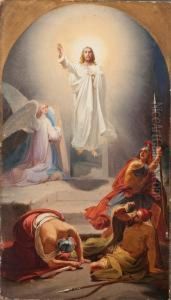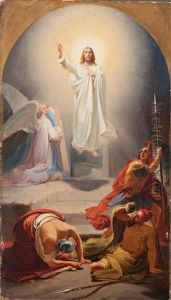Ivan Stepanovich Ksenofontov Paintings
Ivan Stepanovich Ksenofontov was a Russian artist born in 1882 in the village of Malye Kibechi, in the Chuvash region of the Russian Empire, which is now part of the Chuvash Republic in the Russian Federation. His artistic journey began in the early 20th century, a period that was rife with social and political upheaval. Ksenofontov's work was deeply influenced by his heritage and the cultural context of his time, blending elements of Russian realism with the avant-garde movements that were gaining momentum.
Ksenofontov's education in art started at the Kazan Art School, where he studied from 1901 to 1906. Following this, he continued his studies at the much-acclaimed Imperial Academy of Arts in Saint Petersburg. His time at the Academy was marked by a rigorous training in academic drawing, painting, and sculpture, which was the standard for artists at the time. However, the burgeoning avant-garde movements in Russia and across Europe would soon capture his imagination.
During the 1910s, Ksenofontov became part of the vibrant art scene in Russia, contributing to the dialogue between traditional and modern art forms. His works from this period often reflect a search for a new artistic language that could capture the spirit of the age. Following the Russian Revolution of 1917, Ksenofontov, like many of his contemporaries, grappled with the changing political and social landscape. He worked within the new Soviet cultural framework, which sought to use art as a means of propaganda and education.
Despite the restrictions of the time, Ksenofontov managed to create works that maintained a sense of individuality and artistic integrity. His paintings often depicted the lives of ordinary people, rural landscapes, and scenes from Chuvash folklore, thereby preserving and celebrating his ethnic heritage. Ksenofontov's commitment to depicting the Chuvash people and their culture has made him an important figure in Chuvash art history.
Ivan Stepanovich Ksenofontov's career was cut short by his untimely death in 1938, at the age of 56. While his life may have been relatively brief, his artistic legacy has endured. Today, Ksenofontov is remembered as a pioneering figure in the art of the Chuvash region; his works are considered national treasures and are studied for their unique blend of regional and revolutionary influences.

